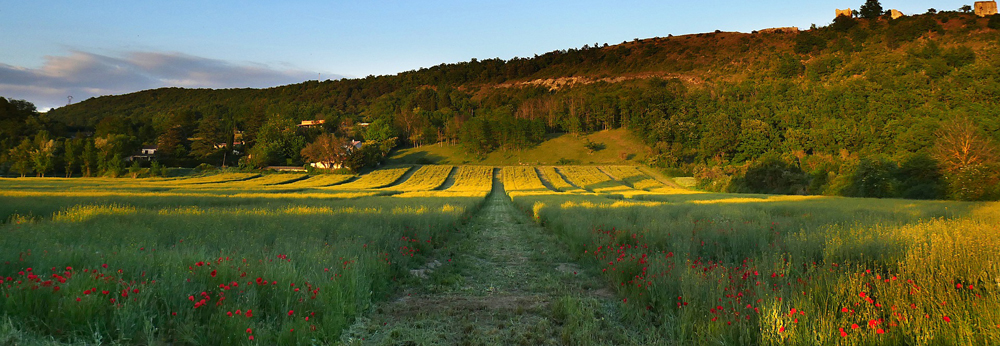Environmental security at the farm level
Robert de Graeff, Senior Policy Advisor, European Landowners' Organization
Thursday, Apr 16, 2020
Combining food and environmental security in the 21st century is no easy task. It will require a rethinking of global agricultural systems and land management that have historically, and for good reasons, given preference to increased yields over greater environmental management. However, clear evidence regarding biodiversity declines and the rapid rate of global heating means that the land management technologies and practices of the 20th century will, in many cases, no longer suffice if we are to meet both objectives.
Transforming the ecosystem potential of agricultural land should be a priority going forward as we cannot depend on certain global regions such as the Amazon rain forests to do all the heavy lifting; while those hotspots deserve the world’s care and support, local ecosystems and biodiversity play an equally critical role.
This will be especially critical when it comes to our remaining tropical forest ecosystems, where the Growing Better report estimates the need for restoration at 300 million ha, but will also require significant reinvestment in agricultural biodiversity and ecosystem support.
Fortunately, the transition is happening in the field, though questions remain over the scale of the transformation as well as its pace. Although criticized for its environmental performance, the EU’s Common Agricultural Policy is undergoing a slow transition towards objectives and away from a policy purely dedicated to food production. Whether the current reform, when matched with the EU Green Deal and the Farm to Fork Strategy, will prove sufficient to achieve the needed environmental outcomes remains to be seen. However, one cannot deny that the green consciousness of the consumers and the food system is at a high level than it has been in decades.
Furthermore, there are more and more actions that farmers can implement without any or significant damage to their yields of farm business profits. No-till agriculture helps maintain carbon in soils, set-aside land for nature in marginal-yield areas of the farm field, pollinator strips, feeding and support for larger species during the winter and post-harvest, as well as vital cooperation at the landscape level to ensure sufficient habitats. Though many of these measures need not be very high in setup costs they do require continued maintenance, and many land managers will need assistance in their proper implementation for maximal effect.
Unfortunately, land managers are still not fully rewarded for such efforts in most cases; support is either based on the requirements for direct support for the CAP, European environmental regulations, or dependent on specific contractual demands by food chain partners. Sometimes, these disparate efforts are not properly aligned. While this level of support is welcome, a new valuation as well as payment system for ecosystem services that goes beyond the farm level to include forest and natural area management should be part of the solutions provided to maintain ecosystem services and biodiversity.
Given the relatively low farm wages when compared against average non-farm income, it remains difficult for farmers to implement expansive environmental projects without the right financial incentives and expert support. A hectare of soil can only be used in one way at a time; the loss in income from using a hectare of arable land in favour of more biodiversity must, at minimum, be compensated equally or farmers will see little practical incentive for change. With the impacts of climate change, including droughts, flooding and changing crop seasons, there is even more incentive to help farms and farmers transition towards providing food and environmental security.
Going forward, the practices of regenerative agriculture could be among those promoted and better integrated into European global food systems. Combining a system principles and practices that creates agricultural products, but also conserves carbon and enhances biodiversity, regenerative agriculture is a farm-system wide approach that looks at all the services that land management can provide and thus goes beyond the food provision model. The practices associated with this model include agricultural techniques that could be implemented at relatively low cost, provided the right assistance is given, at farms of various scales and operation, including reduced or no tillage, soil cover, plant biodiversity and water management. With the right incentives and practical support, such measures could be widely supported and implemented.
Given the scale of the challenges we face, there is no choice but to transition the entire food system towards a vastly more sustainable one that serves land managers, biodiversity, consumers and all other participants in a sprawling and often disconnected system. Just as all have a stake in reducing emissions and maintaining our ecosystems, so do we all have a stake in the continued production of healthy, relatively low-priced food produced by farmers who can make good living doing so.
We have now seen the need for change actualized through proposals such as the European Green Deal, the Farm to Fork Strategy, and the latest reform of the Common Agricultural Policy. While the headline targets are eye-catching and appear to be facing the reality of the scale of the transition we need, these will all need to be translated into policy details that actually enable all food chain actors to act better and do more. There, of course, lie the challenges.
Robert de Graeff
Senior Policy Advisor
European Landowners’ Organization


